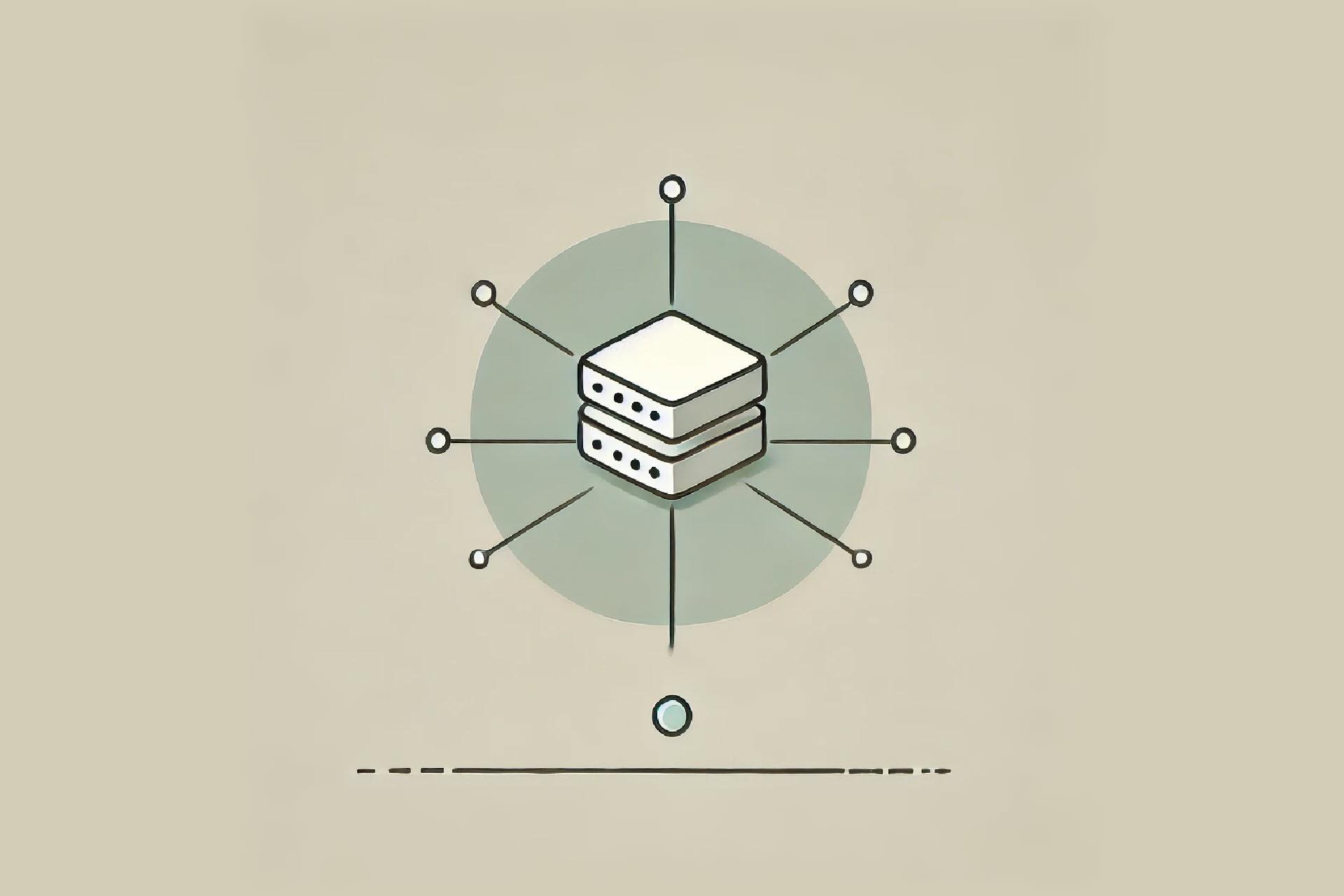Linux is an open-source operating system currently powering most of the Internet. There are hundreds of different versions of Linux. For web servers, the two most popular versions are Ubuntu and CentOS. Both are open-source and free community-supported operating systems.
Don’t know whether to use CentOS or Ubuntu for your server? The following article compares the two Linux distributions to help you examine their strengths and weaknesses and decide on the best solution for you.

What Is CentOS?
CentOS (Community Enterprise Operating System) is a free, open-source Linux distribution developed by the CentOS Project, which is affiliated with Red Hat. It was initially released in 2004, forked from Red Hat Enterprise Linux (RHEL) source code.
The project formerly produced CentOS Linux, a downstream distribution functionally compatible with RHEL, released after RHEL's stable releases. However, the project has shifted its focus entirely to CentOS Stream.
CentOS Stream is a rolling-release distribution that serves as the upstream development platform for RHEL. It is positioned between Fedora Linux (the project where major innovations start) and Red Hat Enterprise Linux.
Note: In 2020. Red Hat announced that CentOS 8 is the last downstream release and introduced CentOS Stream as its successor. Learn more about this transition in CentOS 8 EOL and CentOS Stream or check out our article on CentOS alternatives.
As it is secure and highly customizable, CentOS proved to be a robust platform used by many hosting and cloud providers. It continued the tradition started by Red Hat, providing an extremely stable and thoroughly tested operating system. Additionally, its corporate-level security updates and previously mentioned features earned this operating system the title of one of the most popular Linux distributions in 2010. Its popularity declined slightly in 2012 after Debian introduced its new appealing features.

What Is Ubuntu?
Ubuntu is a free and open-source Linux distribution based on Debian, first released in 2004. Initially available only through proprietary editions, it gained popularity when Mark Shuttleworth founded Canonical and collaborated with Debian developers to create a user-friendly desktop environment. Ubuntu was designed to be accessible for everyday users.
Ubuntu is released in three editions (Desktop, Server, and Core), all of which can run on a standalone computer or in a virtual machine.
This operating system offers a wide range of pre-installed software, a user-friendly GUI, full drive encryption, and a great customer experience. Due to its features and support, it became the most widely used Linux workstation platform. It is a popular choice for running web servers (as part of the LAMP stack), OpenStack projects, and comes pre-installed on many computers (including Dell, HP, Lenovo, and Asus).

CentOS vs. Ubuntu: Comparison
One key feature for CentOS and Ubuntu is that they are both free. You can download a copy for no charge and install it on your own dedicated server.
Each version can be distributed or downloaded to a USB drive, which you can boot into without making permanent changes to your operating system. A bootable drive allows you to test the system before installing it.
Now, take a look at how CentOS and Ubuntu differ according to the following criteria.
| Point of Comparison | CentOS | Ubuntu |
|---|---|---|
| System | Based on Red Hat. | Based on Debian. |
| Package Management | RPM package format where packages are managed with yum/dnf. | DEB package format where packages are managed with apt/apt-get. |
| Updates | Less frequent. | Frequent. |
| Security | Strong. | Good, but requires additional configuration. |
| Support | Good documentation and a smaller yet active support community. | Has a 5-year support lifecycle, excellent documentation, and a large active support community. |
| Usability | Has a learning curve if the user has no experience working with RHEL. Requires a certain level of technical skills. | Very user-friendly and straightforward. Excellent for new and less experienced users. |
System
The system core is the main difference between these popular Linux distributions. CentOS is a fork of RHEL, a downstream community project, whereas Ubuntu is based on Debian, created and supported by Canonical.
Package Management
CentOS utilizes the RPM package manager for installing, building, and verifying packaged software. It works with the .rpm file format and a front-end tool for managing packages called YUM (DNF in CentOS 8) .
Ubuntu and other Debian Linux distributions use the DEB package management system. It includes software for installing, removing, and providing information about .deb packages known as dpkg. Packages have the .deb extension and are managed by APT, a command-line tool that works as a front-end for dpkg.
Updates
Unlike Ubuntu, CentOS does not have frequent updates due to the extensive testing on each component before release. New versions are developed and tested for extended periods, which is why some developers consider it to be more stable and secure. On the other hand, this implies the operating system may be running more mature software versions than Ubuntu would. Additionally, the slow release cycle results in limited access to third-party software updates. You may need to manually install third-party software or updates if they haven’t been included in the repository.
Ubuntu allows you to maintain the latest software with its frequent updates. Due to its frequent updates, Ubuntu often includes newer software in its latest releases. While it can be fun to explore new options and technology, it also risks creating conflicts with existing software and configurations.
Security
Both Linux distributions are considered secure and stable, but there are slight differences between them. CentOS is less prone to cyber threats because it undergoes three layers of security patches. Additionally, it incorporates several corporate-level security updates, further enhancing its stability.
Ubuntu disables the root user by default and encourages using sudo to prevent potential breaches. Like CentOS, it performs security patches well, however, it is more prone to web threats due to its frequent updates.
Note: Ensure your Ubuntu system stays protected with the latest security packages at all times by setting up and enabling automatic security updates.
Support
When it comes to support, Ubuntu has the upper hand with its excellent documentation, extensive support community, and a myriad of tutorials. CentOS doesn’t lag far behind, offering good documentation and a smaller yet active support community.
Ubuntu publishes a Long-Term Support (LTS) release every two years, and each LTS release receives five years of support. Canonical commits to update, patch, and maintain the software during this period. After that, users can subscribe to Extended Security Maintenance (ESM), which provides an additional five years of security maintenance for the Ubuntu base OS.
Major releases of CentOS are maintained for ten years. This has been the practice for all versions until Red Hat announced its switch to CentOS Stream and declared an early end of life (EOL) for CentOS 8.

Usability
The Canonical team developed Ubuntu, with a focus on creating an easy-to-use Linux. Therefore, Ubuntu gets high marks for its user-friendliness in terms of usability. This straightforward distribution allows you to install a graphical user interface on a server for easier management. The GUI is intuitive and easy to manage, with a handy search function. Running utilities from the command line is straightforward. Most commands will suggest the proper usage, and the sudo command is easy to use to resolve “Access denied” errors.
Ubuntu Linux offers a more seamless software installation process. Most commonly used software and operating system features are included and updated automatically.
Ubuntu is a better choice for less experienced users, whereas working on CentOS requires some technical skills and is typically for more advanced users. Still, CentOS does include specific tools to simplify working on the platform, such as the cPanel control.
With CentOS built around the Red Hat architecture, many old-school Linux users find it more familiar and comfortable.
CentOS vs. Ubuntu: Use Cases
Both Linux distributions have appealing features and offer robust platforms for developing, web hosting, and cloud computing. Over the years, one distro has proved to perform better in certain use cases and scenarios over the other.
CentOS
CentOS is often used by system administrators who want to manage web hosting services with a control panel. Ubuntu does not support cPanel, whereas CentOS offers compatibility with cPanel, Webmin, DirectAdmin, and other management panels.
It’s been primarily implemented in high-end corporate IT applications. Additionally, medium and larger-sized businesses prefer this operating system over other Linux distributions because it offers a mature, stable platform with comprehensive documentation.
CentOS releases updates much slower than other Linux variants. If you have a strong business need for stability or your environment is not tolerant of change, this can be more helpful than a faster release schedule.
CentOS is not as popular for gaming as Ubuntu. If you’ve used CentOS for your server, try the Fedora-based distribution for gaming. Fedora Games Spin is the preferred Linux distribution for gaming servers among CentOS/RedHat/Fedora Linux users.
Ubuntu
Ubuntu is most commonly used by less experienced system admins, users who appreciate a GUI or run smaller private servers. Although it doesn’t support cPanel, it offers alternatives like VestCP and Webmin to simplify web hosting management.
Additionally, the cloud market is dominated by Ubuntu, which greatly supports cloud deployment and container virtualization. Canonical Kubernetes is built on Ubuntu, the reference platform on all major public clouds. June 2019, Canonical announced full enterprise support for Kubernetes 1.15 kubeadm deployments, its Charmed Kubernetes, and MicroK8s; the popular single-node deployment of Kubernetes.
Most of the best gaming distros are Debian/Ubuntu-based, making them a popular choice for game servers.
PhoenixNAP's Bare Metal Cloud platform supports automated deployments of both Ubuntu and CentOS. Ubuntu servers are deployed and available in under 2 minutes.
Mix and match 20 pre-configured instance types and create a robust environment that is fine-tuned to your compute, memory, storage, and networking needs.
CentOS vs. Ubuntu Final Words
Your decision should reflect the needs of your web server and usage. Additionally, you can learn more about web servers by reading our comparison article, App Servers vs. Web Servers. If you are a beginner or enjoy implementing new software and technology as soon as it’s released, you might prefer Ubuntu. CentOS might be a better fit if you’re a seasoned pro or hate dealing with updates breaking your server.



